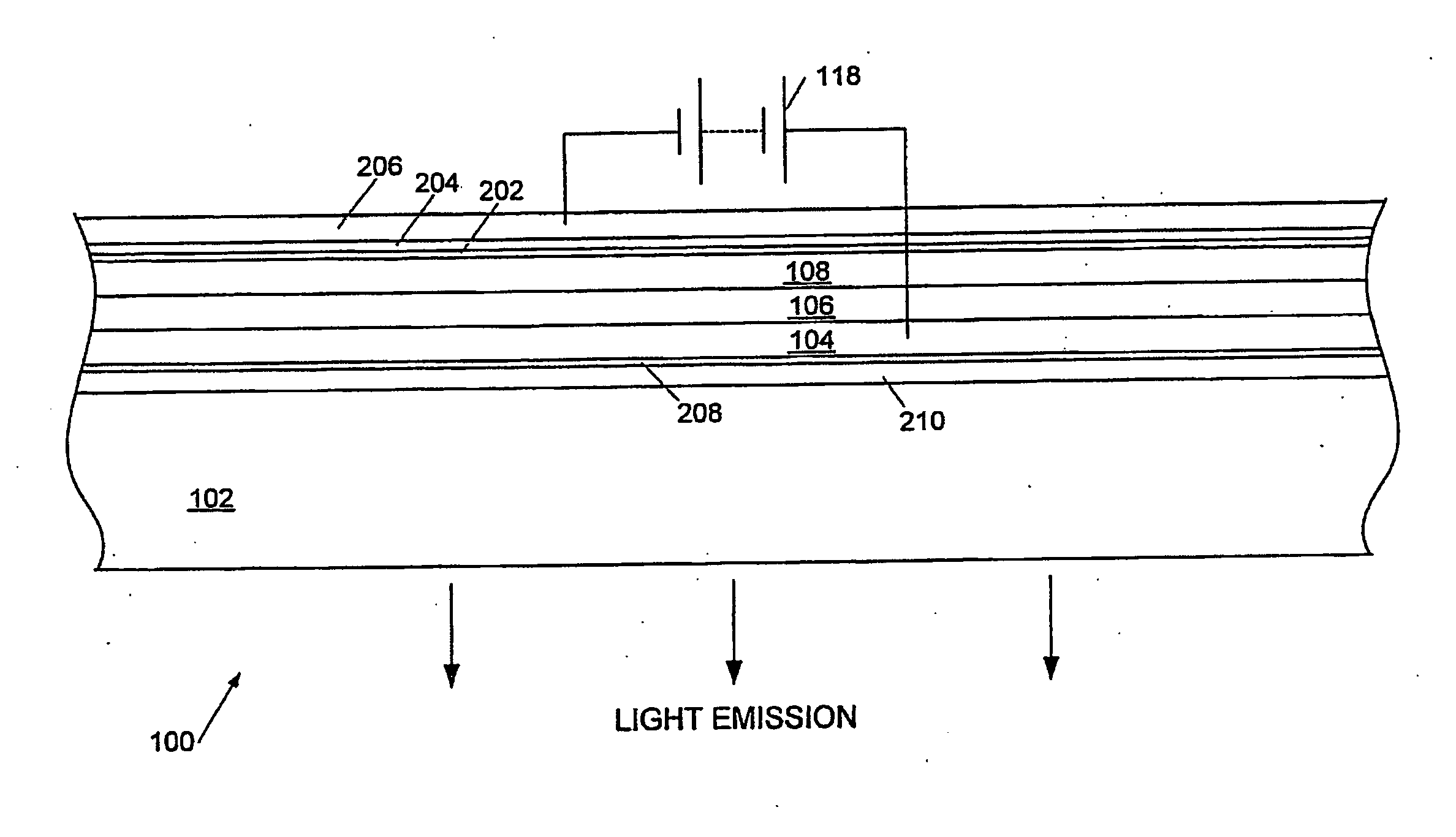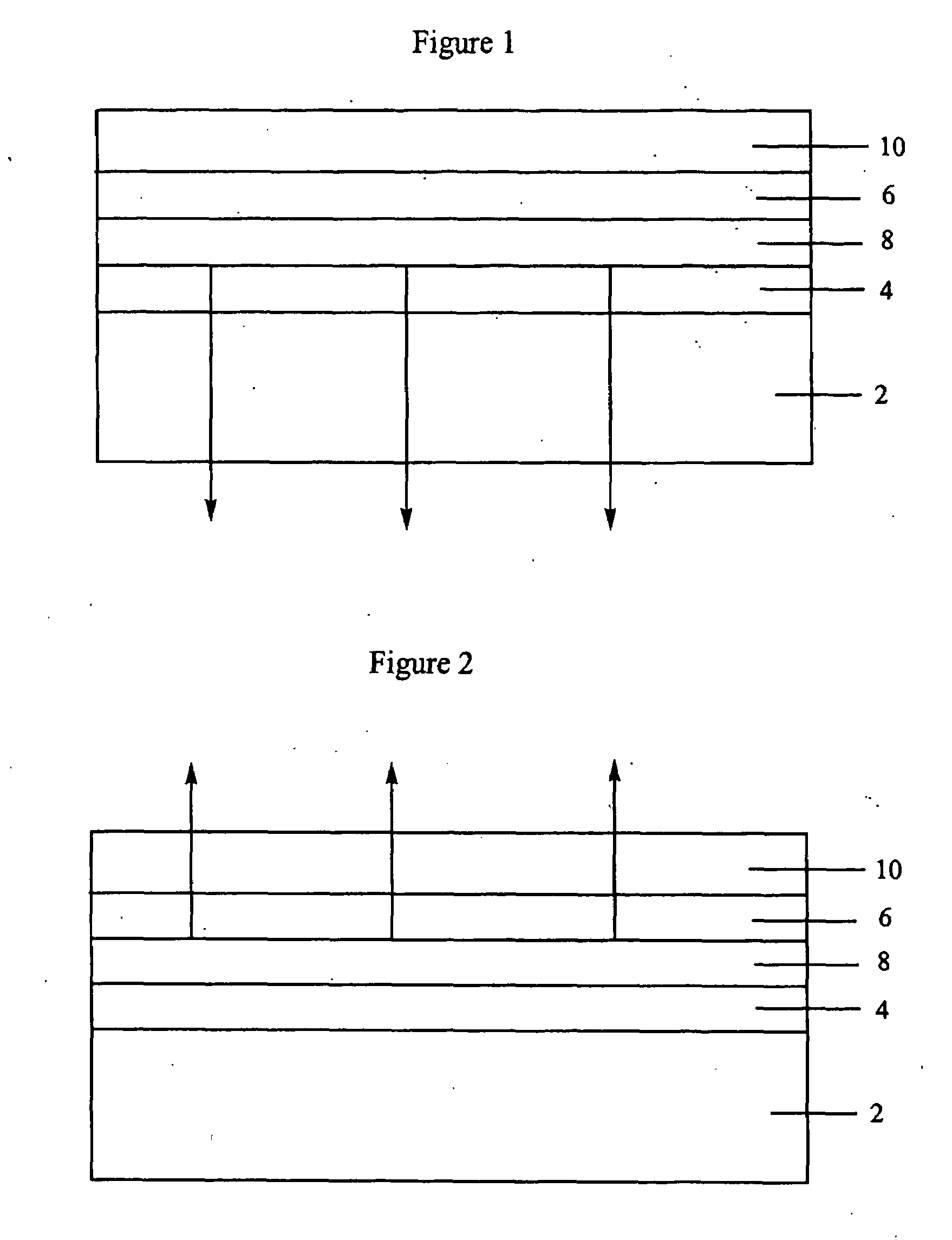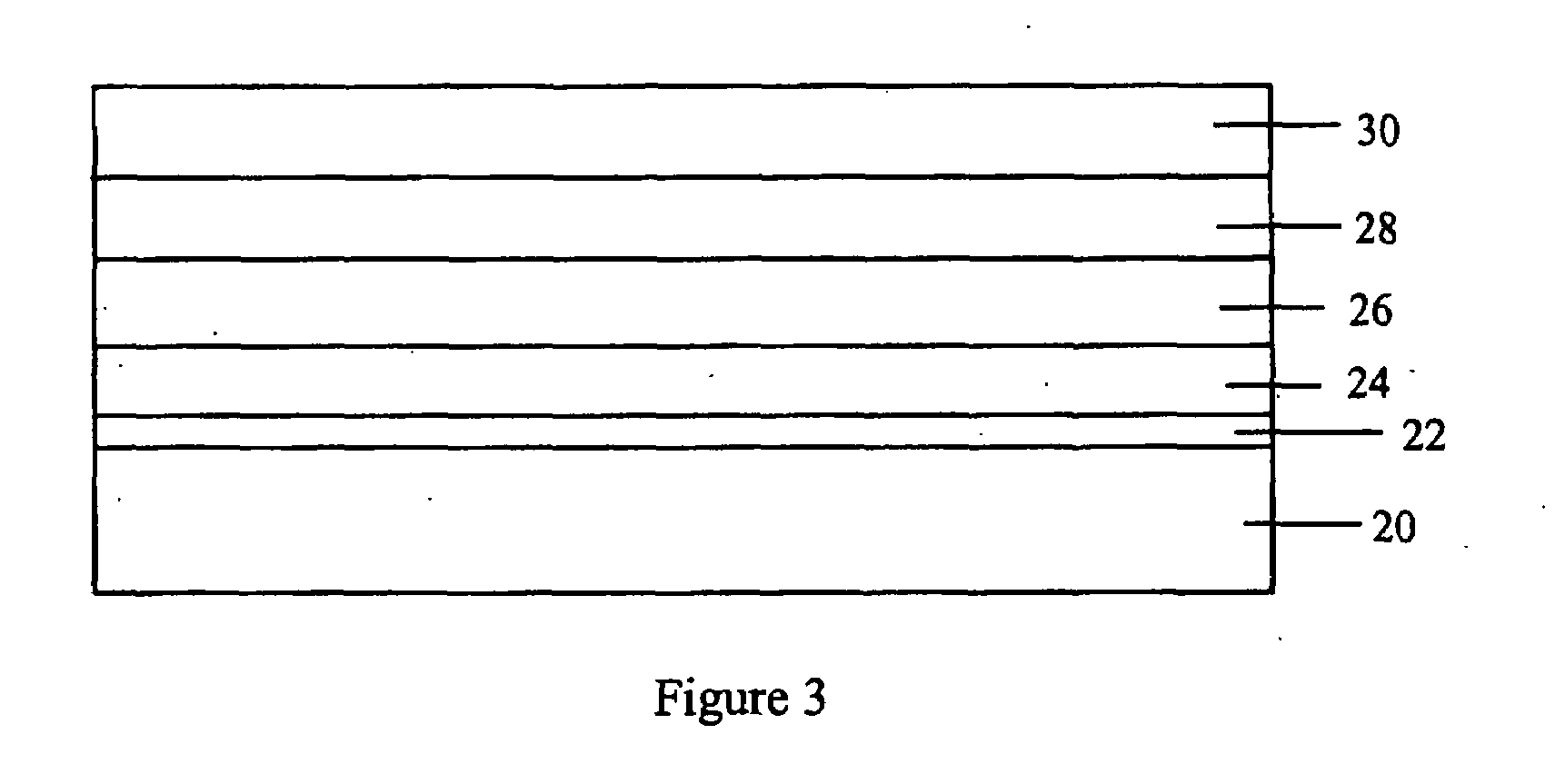Organic Electroluminescent Device
an electroluminescent device and organic technology, applied in the direction of solid-state devices, vacuum evaporation coatings, coatings, etc., can solve the problems of reducing the efficiency of the device, the device cannot escape from the device, and the light may be lost within the device, so as to avoid potential parallax problems, increase the contrast of the electoluminescent device, and enhance the contrast
- Summary
- Abstract
- Description
- Claims
- Application Information
AI Technical Summary
Benefits of technology
Problems solved by technology
Method used
Image
Examples
Embodiment Construction
[0107]Embodiments of the first aspect of the invention will be described first.
[0108]FIG. 3 shows a bottom-emitting organic electroluminescent device comprising a glass substrate 20, a thin intermediate layer of silver 22 disposed on the glass substrate 20, an anode 24 comprising ITO disposed on the thin silver layer 22, a layer of PEDOT 26 disposed on the ITO 24, a light emitting polymer layer 28 disposed on the PEDOT 26 and a barium / aluminum cathode 30 disposed on the light-emitting polymer layer 28.
[0109]Optical modelling has shown that modifying the anode structure of the polymer light emitting diode structure by including a thin layer of semi-transparent metal improves optical out-coupling and also provides colour tuning of the emission towards the PAL region.
[0110]Modelling has shown that the best materials for the intermediate layer are either high refractive index dielectrics (e.g. titanium dioxide, silicon oxynitride and silicon nitride) or metals that are transparent in th...
PUM
| Property | Measurement | Unit |
|---|---|---|
| refractive index | aaaaa | aaaaa |
| wavelength | aaaaa | aaaaa |
| thickness | aaaaa | aaaaa |
Abstract
Description
Claims
Application Information
 Login to View More
Login to View More - R&D
- Intellectual Property
- Life Sciences
- Materials
- Tech Scout
- Unparalleled Data Quality
- Higher Quality Content
- 60% Fewer Hallucinations
Browse by: Latest US Patents, China's latest patents, Technical Efficacy Thesaurus, Application Domain, Technology Topic, Popular Technical Reports.
© 2025 PatSnap. All rights reserved.Legal|Privacy policy|Modern Slavery Act Transparency Statement|Sitemap|About US| Contact US: help@patsnap.com



